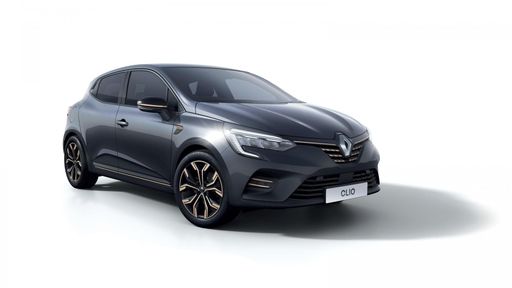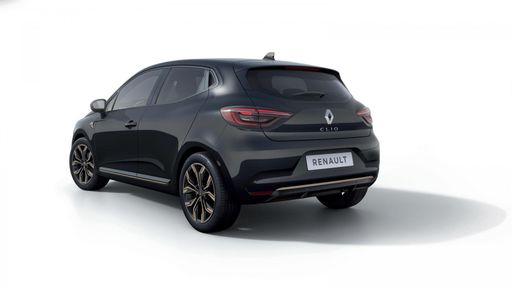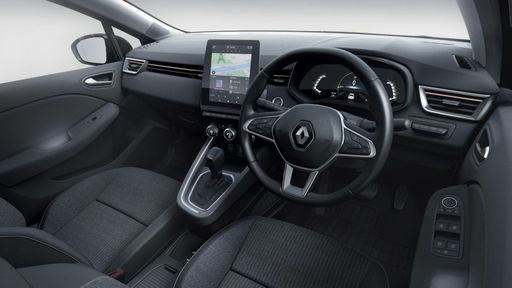Peugeot Partner vs Renault Clio – Which model is better for everyday use?
Two cars, one duel: Peugeot Partner meets Renault Clio.
Which one wins in performance, efficiency and value for money? Find out now!
Costs and Efficiency: Price and efficiency are key factors when choosing a car – and this is often where the real differences emerge.
Renault Clio has a noticeable advantage in terms of price – it starts at 16600 £, while the Peugeot Partner costs 22400 £. That’s a price difference of around 5804 £.
Fuel consumption also shows a difference: Renault Clio manages with 4.30 L and is therefore distinct more efficient than the Peugeot Partner with 5.20 L. The difference is about 0.90 L per 100 km.
Engine and Performance: Under the bonnet, it becomes clear which model is tuned for sportiness and which one takes the lead when you hit the accelerator.
When it comes to engine power, the Renault Clio has a barely noticeable edge – offering 143 HP compared to 136 HP. That’s roughly 7 HP more horsepower.
In acceleration from 0 to 100 km/h, the Renault Clio is clearly perceptible quicker – completing the sprint in 9.30 s, while the Peugeot Partner takes 11.20 s. That’s about 1.90 s faster.
In terms of top speed, the Peugeot Partner performs slight better – reaching 183 km/h, while the Renault Clio tops out at 174 km/h. The difference is around 9 km/h.
There’s also a difference in torque: Peugeot Partner pulls distinct stronger with 300 Nm compared to 205 Nm. That’s about 95 Nm difference.
Space and Everyday Use: Whether family car or daily driver – which one offers more room, flexibility and comfort?
Both vehicles offer seating for 5 people.
In curb weight, Renault Clio is a bit lighter – 1124 kg compared to 1329 kg. The difference is around 205 kg.
In terms of boot space, the Peugeot Partner offers decisively more room – 1800 L compared to 391 L. That’s a difference of about 1409 L.
In maximum load capacity, the Peugeot Partner performs convincingly better – up to 4000 L, which is about 2931 L more than the Renault Clio.
When it comes to payload, Peugeot Partner clearly takes the win – 991 kg compared to 406 kg. That’s a difference of about 585 kg.
Who comes out on top?
Overall, the Peugeot Partner shows itself to be is largely superior and secures the title of DriveDuel Champion.
It convinces with the more balanced overall package and proves to be the more versatile choice for everyday use.
Peugeot Partner
Peugeot Partner
The Peugeot Partner is a versatile and practical vehicle, ideal for both urban and rural settings. Its spacious interior and adaptable seating make it a popular choice for families and businesses alike. With a focus on reliability and efficiency, the Partner is well-suited to meet the demands of everyday transport.
detailsRenault Clio
The Renault Clio continues to impress with its sleek design and agile handling, making it a standout choice in the compact car segment. Inside, it offers a surprisingly spacious and comfortable cabin, crafted with high-quality materials that enhance the driving experience. Its fuel efficiency and reliable performance make it an attractive option for both city commuting and longer journeys.
details @ renault-presse.de
@ renault-presse.de
 @ renault-presse.de
@ renault-presse.de
 @ renault-presse.de
@ renault-presse.de

|
|
|
|
|
Costs and Consumption |
|
|---|---|
|
Price
22400 - 33800 £
|
Price
16600 - 23000 £
|
|
Consumption L/100km
5.2 - 6.3 L
|
Consumption L/100km
4.3 - 5.3 L
|
|
Consumption kWh/100km
17.40 kWh
|
Consumption kWh/100km
-
|
|
Electric Range
354 km
|
Electric Range
-
|
|
Battery Capacity
-
|
Battery Capacity
0.60 kWh
|
|
co2
0 - 143 g/km
|
co2
97 - 121 g/km
|
|
Fuel tank capacity
53 - 61 L
|
Fuel tank capacity
39 - 42 L
|
Dimensions and Body |
|
|---|---|
|
Body Type
Cargo Van
|
Body Type
Hatchback
|
|
Seats
2 - 5
|
Seats
5
|
|
Doors
4 - 5
|
Doors
5
|
|
Curb weight
1329 - 1813 kg
|
Curb weight
1124 - 1331 kg
|
|
Trunk capacity
1800 L
|
Trunk capacity
301 - 391 L
|
|
Length
4403 - 4753 mm
|
Length
4053 mm
|
|
Width
1848 mm
|
Width
1798 mm
|
|
Height
1796 - 1812 mm
|
Height
1440 mm
|
|
Max trunk capacity
3300 - 4000 L
|
Max trunk capacity
979 - 1069 L
|
|
Payload
611 - 991 kg
|
Payload
398 - 406 kg
|
Engine and Performance |
|
|---|---|
|
Engine Type
Electric, Diesel, Petrol
|
Engine Type
Full Hybrid, Petrol
|
|
Transmission
Automatic, Manuel
|
Transmission
Automatic, Manuel
|
|
Transmission Detail
Reduction Gearbox, Manual Gearbox, Automatic Gearbox
|
Transmission Detail
Automatic Gearbox, Manual Gearbox
|
|
Drive Type
Front-Wheel Drive
|
Drive Type
Front-Wheel Drive
|
|
Power HP
102 - 136 HP
|
Power HP
67 - 143 HP
|
|
Acceleration 0-100km/h
11.20 s
|
Acceleration 0-100km/h
9.3 - 17.1 s
|
|
Max Speed
135 - 183 km/h
|
Max Speed
160 - 174 km/h
|
|
Torque
205 - 300 Nm
|
Torque
95 - 205 Nm
|
|
Number of Cylinders
3 - 4
|
Number of Cylinders
3 - 4
|
|
Power kW
75 - 100 kW
|
Power kW
49 - 105 kW
|
|
Engine capacity
1199 - 1499 cm3
|
Engine capacity
999 - 1598 cm3
|
General |
|
|---|---|
|
Model Year
2024 - 2025
|
Model Year
2023 - 2025
|
|
CO2 Efficiency Class
A, E
|
CO2 Efficiency Class
C, D
|
|
Brand
Peugeot
|
Brand
Renault
|
Is the Peugeot Partner offered with different drivetrains?
Available configurations include Front-Wheel Drive.
The prices and data displayed are estimates based on German list prices and may vary by country. This information is not legally binding.
